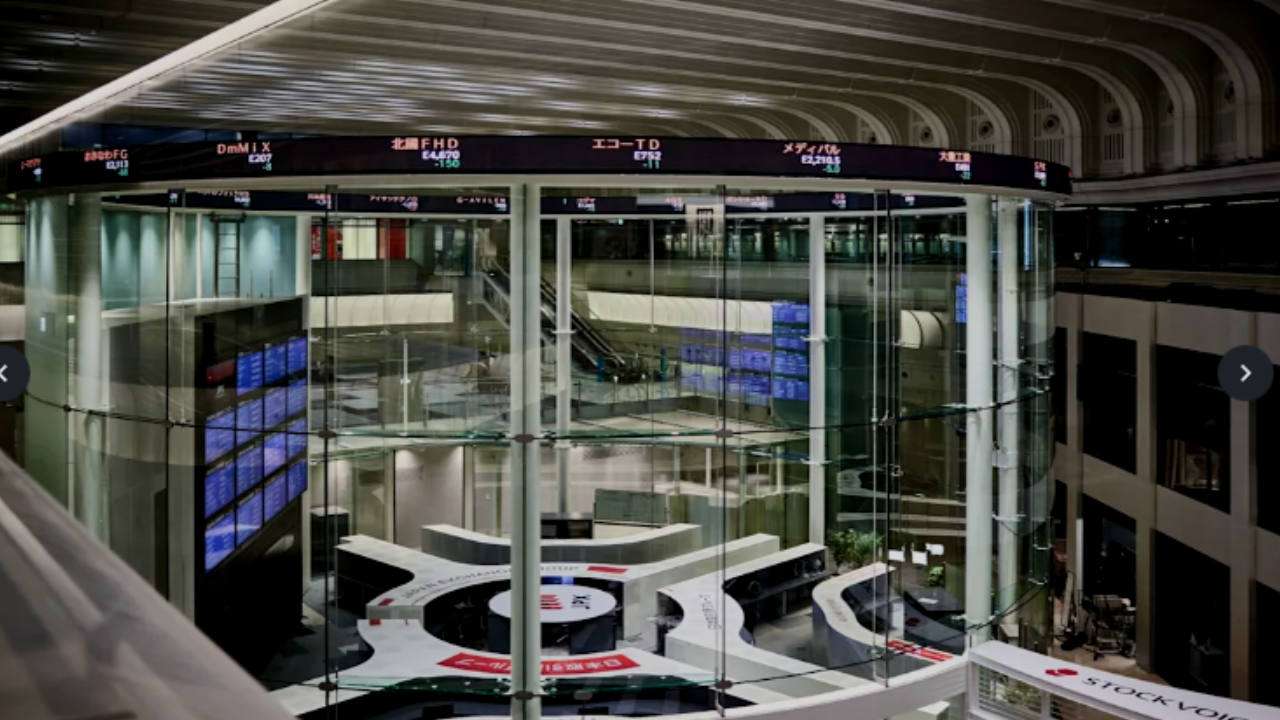
By: Sayan
Published on: Apr 24, 2025
The global financial markets in April 2025 are a whirlwind of volatility, driven by escalating tensions in the U.S.-China trade dispute and unpredictable policy shifts from the Trump administration. As investors grapple with tariff concerns, the U.S. dollar weakens, and safe-haven assets like gold and the yen gain traction. The S&P 500, Nasdaq, and Dow Jones Industrial Average are experiencing sharp fluctuations, reflecting investor uncertainty about the economic fallout from reciprocal tariffs. This 1500-word blog explores the dynamics of these market movements, the impact of tariffs on corporate earnings, safe-haven investment strategies, and how traders can navigate this turbulent landscape. Drawing from recent market analyses, we’ll unpack why stocks are wavering, what’s driving the dollar’s slip, and how to position portfolios for stability in 2025.
Stock markets are reacting to a cascade of tariff-related developments. On April 3, 2025, U.S. stocks plummeted, with the S&P 500 dropping 4.8%—its worst day since June 2020—erasing $2.5 trillion in value as Trump’s aggressive tariffs sparked recession fears. The Nasdaq fell 6%, and the Dow shed 1,679 points, marking their steepest declines in five years. These losses followed Trump’s announcement of sweeping tariffs, including a 10% baseline on most imports and up to 145% on Chinese goods, prompting retaliatory tariffs from China (125%) and the EU.
However, a brief reprieve came on April 9, when Trump announced a 90-day pause on most tariffs (except China’s), triggering a historic rally. The S&P 500 surged 9.5%—its best day since 2008—while the Nasdaq soared 12.2%, and the Dow climbed nearly 3,000 points. This euphoria was short-lived, as markets slid again on April 10, with the S&P 500 falling 3.46% and the Nasdaq dropping 4.31%, reflecting ongoing uncertainty.
The volatility stems from conflicting signals. Trump’s initial hardline stance, followed by a partial pause, and China’s defiant response—demanding the U.S. revoke unilateral tariffs—have left investors unsure of the trade war’s trajectory. Deutsche Bank strategists slashed their S&P 500 year-end target by 12% to 6,150, citing tariffs’ disproportionate impact on U.S. firms, with 2025 EPS estimates cut from $282 to $240. This uncertainty, coupled with fears of a U.S. recession, drives the market’s wild swings.
The U.S. dollar is under pressure, with the Bloomberg Dollar Spot Index falling 0.4% on April 24, 2025, hitting a three-year low against the euro. This weakening reflects investor concerns about the U.S. economy’s stability amid tariff-induced chaos. As the dollar slips, safe-haven assets are gaining favor:
The dollar’s decline is exacerbated by rising U.S. bond yields, which point to inflation expectations not seen since the 1980s. Federal Reserve Chair Jerome Powell warned that tariffs could keep inflation elevated, complicating monetary policy. This shift to safe-haven assets underscores investor fears of a prolonged trade war and potential stagflation—a mix of stagnant growth and high inflation.
Tariffs are hitting corporate America hard. Companies with significant international exposure, like Nike (down 14%), Apple (down 9%), and Amazon (down 9%), saw sharp declines due to supply chain disruptions and higher import costs. Procter & Gamble cut its sales and profit outlook, citing tariffs and volatile consumer demand, with shares falling in premarket trading. International Business Machines (IBM) slumped 7% after disappointing earnings, reflecting high market expectations unmet amid trade uncertainty.
Barclays estimates tariffs could reduce S&P 500 earnings by 2.8%, with retaliatory measures amplifying the damage. Delta Air Lines withdrew its 2025 guidance as trade war fears depressed travel bookings. Smaller companies, tracked by the Russell 2000, entered bear market territory, down over 20% from December highs, as they lack the resilience of larger firms. These earnings pressures highlight the broader economic risks of Trump’s trade policies, which could push the U.S. toward recession.
The U.S.-China trade dispute is at a critical juncture. Trump’s April 9 tariff pause on most countries (excluding China) eased some fears, but his 125% tariff on Chinese goods and China’s 84% retaliation signal a protracted conflict. Treasury Secretary Scott Bessent indicated a full trade deal could take two to three years, tempering hopes for a quick resolution. China’s insistence on mutual respect and the revocation of unilateral tariffs adds complexity.
Economists warn of severe consequences. Goldman Sachs slashed its U.S. growth forecast, citing recession risks, while the World Bank urged developing nations to lower tariffs to counter global trade slowdowns. The U.S. economy faces stagflation risks, with tariffs driving up costs and slowing growth. Service-sector activity weakened in March, with the ISM services index at 50.8, below the expected 52.9.
Globally, markets are feeling the strain. Europe’s STOXX 600 fell 5.12%, and Japan’s Nikkei 225 dropped 2.77% on April 4. Mexican stocks, spared from tariffs, bucked the trend, with the iShares MSCI Mexico ETF rising 2.3%. The euro strengthened to 1.11 against the dollar, with Citigroup predicting a rise to 1.15. These global ripples underscore the trade war’s far-reaching impact.
The stock market’s fluctuations in April 2025 reflect deep uncertainty over U.S.-China trade tensions and Trump’s tariff policies. The S&P 500’s wild swings—plummeting 4.8% on April 3, surging 9.5% on April 9, and falling 3.46% on April 10—highlight the market’s sensitivity to policy shifts. The dollar’s slip and the rush to safe-haven assets like gold and Treasuries signal investor caution. Corporate earnings are under pressure, with tariffs threatening U.S. companies’ profitability.
Investors can navigate this volatility by diversifying into defensive assets, monitoring earnings, and staying agile. While Trump’s tariff pause offers temporary relief, the ongoing U.S.-China trade war and potential recession risks keep markets on edge. By staying informed and strategic, traders can weather the storm and position themselves for long-term success in 2025’s unpredictable financial landscape.
Comments
No comments yet. Be the first to comment!
Leave a Comment